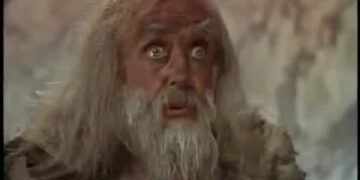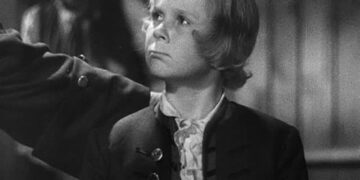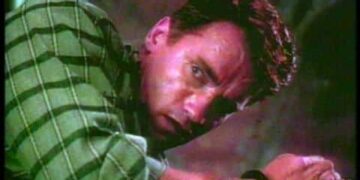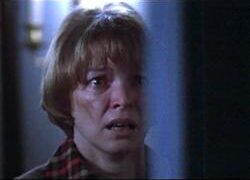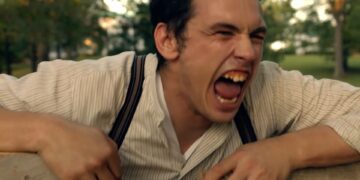Welcome to the ultimate guide to the world of Billy Liar, the seminal work of British author Keith Waterhouse.
This article will serve as your comprehensive resource, delving into every aspect of the beloved book and movie, from plot summaries to character analysis, and from memorable quotes to lesser-known facts.
Whether you’re a die-hard fan or new to the story, you’ll find a treasure trove of information to satisfy your curiosity.
Book Summary of Billy Liar
Billy Liar, first published in 1959, follows the life of William Fisher, a young man living in the fictional town of Stradhoughton in Northern England.
William, or “Billy” as he’s known, is a daydreamer who constantly escapes his mundane reality by retreating into a fantasy world he calls Ambrosia. In Ambrosia, Billy is a heroic figure, admired and respected by all.
As the story unfolds, we see Billy’s struggles with work, his relationships, and his own conscience.
He works as an undertaker’s assistant, a job he finds unfulfilling and dull. He is also engaged to two women simultaneously, his long-term girlfriend, Barbara, and the more adventurous Rita. As Billy’s lies and fantasies begin to catch up with him, he must confront the truth and make tough decisions about his future.
Movie summary and key differences from the book
Billy Liar, a British classic, was originally a novel written by Keith Waterhouse before being adapted into a film directed by John Schlesinger.
The movie follows the life of William Fisher, also known as Billy Liar, a young man with a wild imagination who spends his days escaping reality through his daydreams.
The book and movie largely share the same storyline, but there are some key differences worth noting.
The movie summary differs from the book in several ways, specifically in terms of character development and plot pacing. In the book, Billy’s mental escapism is more deeply explored, while the film does not delve into this aspect as much. Additionally, certain characters, such as Liz, Billy’s love interest, are more developed in the book compared to the movie. The pacing of the plot is also faster in the movie, making it more suitable for a cinematic experience.
Another key difference between the book and the movie is the ending. In the book, Billy is left with the dilemma of whether to accept a job in London and leave his hometown.
In the movie, however, the ending is left open-ended, with the audience left to wonder what decision Billy ultimately makes. This difference in endings leaves room for interpretation and discussion, making both the book and the movie uniquely engaging experiences.
Parent guide for Billy Liar
As a parent, it is important to understand the content of the media your children consume. Billy Liar is a classic piece of British literature and film that may be suitable for older teenagers and young adults. However, parents should be aware of some themes and scenes that may not be appropriate for younger children.
The story contains mature themes, such as infidelity, deception, and coping with the pressures of adult life. It also includes scenes of smoking and alcohol consumption, which may not be suitable for younger viewers. Additionally, some of the language used in the book and movie may be considered offensive by today’s standards.
Parents should consider these factors before allowing their children to read the book or watch the movie and use their discretion based on their child’s maturity.
When and where does Billy Liar take place?
Billy Liar is set in the early 1960s in a fictional Yorkshire town called Stradhoughton. The story takes place over a single day, with the narrative unfolding as Billy navigates his daily life and relationships while escaping into his elaborate daydreams. The setting is a crucial element of the story, as it reflects the social and cultural climate of the time and provides a backdrop for Billy’s struggles and fantasies.
Exploring the film locations
The movie adaptation of Billy Liar was filmed in various locations throughout Yorkshire, England.
Some of the key filming locations include:
- Bradford: Many of the outdoor scenes were filmed in Bradford, including the iconic opening scene in which Billy walks through the streets of his hometown. The city’s architecture and atmosphere play a significant role in setting the tone for the film.
- Baildon: The train station scenes were filmed at Baildon Railway Station, which is situated in West Yorkshire. This location is particularly significant as it is where Billy comes face-to-face with the reality of his choices and the potential consequences of his actions.
- Leeds: Several interior scenes were filmed in Leeds, including those set in the funeral parlor where Billy works. Leeds is also the birthplace of author Keith Waterhouse, making it a fitting location for the film adaptation of his novel.
Who’s who: Characters in Billy Liar
Billy Liar features a cast of memorable characters, each with their unique quirks and characteristics.
Here is a brief overview of the primary characters in the story:
- William “Billy” Fisher: The protagonist of the story, Billy is a young man with a vivid imagination who uses his daydreams to escape the mundane realities of his life.
- Alice Fisher: Billy’s long-suffering mother, who struggles to understand her son’s behavior and often finds herself at odds with him.
- Geoffrey Fisher: Billy’s father, who is constantly disappointed by his son’s lack of ambition and drive.
- Liz: A free-spirited young woman who becomes the object of Billy’s affection and offers him a chance to escape his humdrum life.
- Barbara: One of Billy’s two fiancées, who represents the traditional, domestic life that Billy is trying to avoid.
- Rita: Billy’s other fiancée, who is more assertive and demanding than Barbara.
- Councillor Duxbury: Billy’s strict and authoritarian boss at the funeral parlor.
Memorable quotes from the book and movie
Both the book and movie version of Billy Liar are filled with memorable quotes that capture the essence of the story and its characters.
Here are some of the most notable quotes from the book and movie:
- “Life is before you, not behind you” – Liz.
- “The trouble with you, son, is you’ve got no sense of responsibility” – Geoffrey Fisher.
- “I’m not daft, you know. I’m just not interested” – Billy.
- “You’re not just a liar, Billy. You’re a hypocrite, too” – Rita.
- “There’s no such thing as a perfect world, Billy. You’ve got to make the best of the one you’re in” – Alice Fisher.
The soundtrack by Richard Rodney Bennett
The soundtrack for the film adaptation of Billy Liar was composed by Richard Rodney Bennett, a renowned British composer.
The music is an integral part of the film’s atmosphere and plays a significant role in setting the tone and mood of the story. The soundtrack features a mix of jazz and orchestral arrangements that perfectly capture the essence of the early 1960s.
Bennett’s work on the Billy Liar soundtrack earned him critical acclaim and contributed to the movie’s lasting appeal.
Intriguing curiosities and lesser-known facts
Billy Liar is a classic story that has stood the test of time, but there are still some lesser-known facts and intriguing curiosities surrounding the book and the movie.
Here are some interesting tidbits:
- The novel was initially published in 1959, and the film adaptation was released in 1963.
- Author Keith Waterhouse also co-wrote the screenplay for the movie adaptation with Willis Hall.
- The character of Billy Liar was inspired by Waterhouse’s childhood friend, who was a notorious storyteller and daydreamer.
- Tom Courtenay, who played Billy in the film, was a relatively unknown actor at the time, but his performance in Billy Liar helped to launch his successful career.
- Julie Christie, who played Liz in the movie, also rose to fame after her role in Billy Liar.
Tips for Cosplay and Dressing like the Characters
When it comes to dressing up like your favorite characters from Billy Liar, there are a few tips to keep in mind to make your cosplay experience as authentic as possible.
First and foremost, study the character’s appearance and clothing style. Pay attention to the details, such as accessories, makeup, and hairstyle, to ensure you’re capturing the essence of the character.
Next, consider the materials and fabrics used in the costumes. You want to find materials that mimic the look of the original outfits without breaking the bank. For example, if a character wears a tweed suit, you can look for affordable tweed or tweed-like fabrics to create your costume.
Additionally, don’t be afraid to get creative with your costume and add your personal touch to the character’s look.
Finally, practice your character’s mannerisms and body language. This will help you embody the character as you wear the costume.
Now that you have some tips on how to dress like your favorite Billy Liar characters let’s dive into the life and works of the creator, Keith Waterhouse.
Keith Waterhouse: Biography and works
Born on February 6, 1929, in Leeds, Yorkshire, Keith Waterhouse was an English novelist, playwright, and screenwriter. He started his career as a journalist and later moved on to writing novels and plays. Some of his most famous works include ‘Billy Liar,’ ‘Jeffrey Bernard is Unwell,’ and ‘Good Grief.’
Waterhouse’s writing style was often witty and satirical, with a focus on British social issues. He co-wrote many plays and screenplays with his longtime friend and collaborator, Willis Hall. Their partnership was highly successful, and they worked together on several television projects as well.
Keith Waterhouse passed away on September 4, 2009, leaving behind a legacy of memorable works that continue to be celebrated today.
Billy Liar’s ending explained
The book’s ending sees Billy preparing to leave his small-town life behind and move to London with his girlfriend, Liz. However, he ultimately misses the train and is left behind on the platform as the train pulls away.
This is a poignant and powerful moment in the story, as it highlights Billy’s inability to take control of his life and break free from his mundane existence.
Possibilities for a remake, sequel, or spin-off
Given the enduring popularity of ‘Billy Liar,’ it’s not surprising that there have been calls for a remake, sequel, or spin-off over the years.
A modern adaptation could potentially explore the themes of the original story in a contemporary setting, perhaps focusing on a young man or woman who struggles to find their place in today’s fast-paced, technology-driven world.
A sequel could follow the further adventures of Billy as he finally escapes his small-town life and navigates the challenges of adult life in the city.
Alternatively, a spin-off could focus on one of the other characters from the original story, offering a fresh perspective on the events of ‘Billy Liar.’
Other media by John Schlesinger
John Schlesinger was an accomplished British film director who gained international recognition for his work on films such as ‘Midnight Cowboy,’ ‘Sunday Bloody Sunday,’ and ‘Marathon Man.’
In addition to directing the 1963 film adaptation of ‘Billy Liar,’ Schlesinger also worked on several other notable projects throughout his career.
Some of his other films include ‘Darling,’ a 1965 drama that won three Academy Awards, and ‘Far from the Madding Crowd,’ a 1967 adaptation of Thomas Hardy’s classic novel.
Schlesinger’s work often focused on exploring complex human relationships and social issues, making him an ideal choice to bring ‘Billy Liar’ to the big screen.
Similar Media to Billy Liar
Billy Liar, the classic British novel by Keith Waterhouse, has captivated readers and viewers alike with its compelling story of a young man’s escapism and vivid imagination. Originally published in 1959, the book was later adapted into a successful film starring Tom Courtenay in 1963.
The story’s enduring appeal and relatability have led to the creation of several similar media, exploring themes of escapism, daydreaming, and the clash between personal aspirations and societal expectations.
One such example is Walter Mitty, a short story by James Thurber, which was adapted into a film in 1947 and then again in 2013. The story follows the titular character, Walter Mitty, who frequently escapes the mundanity of his everyday life by indulging in vivid daydreams. These fantasies often involve Mitty taking on heroic roles, much like Billy Liar’s protagonist, Billy Fisher.
Another piece of media that shares similar themes with Billy Liar is the coming-of-age drama, The Graduate. Released in 1967, the film stars Dustin Hoffman as Benjamin Braddock, a recent college graduate who struggles to find his place in society. Like Billy Fisher, Benjamin Braddock is a character caught between his own dreams and the expectations placed upon him by the world around him.
Other Works by Keith Waterhouse
Keith Waterhouse’s illustrious career as a writer, playwright, and journalist spans over five decades. While Billy Liar remains his most well-known work, Waterhouse has written numerous other novels, plays, and screenplays that showcase his talent for crafting engaging characters and stories.
One such novel is ‘Jubb,’ published in 1963. This darkly comic tale explores the life of Percival Henry Jubb, a struggling writer who becomes embroiled in a series of increasingly bizarre situations. With its wit, humor, and incisive commentary on the human condition, ‘Jubb’ is a testament to Waterhouse’s literary prowess.
Waterhouse also found success as a playwright, with his 1970 play ‘Jeffrey Bernard is Unwell’ garnering critical acclaim. Based on the life of journalist Jeffrey Bernard, the play delves into the experiences of a man whose chaotic lifestyle and alcoholism have led him to numerous misadventures. This poignant and humorous play is yet another example of Waterhouse’s ability to create compelling and relatable characters.
Book Club Questions for Billy Liar
Engaging in a book club discussion about Billy Liar can lead to insightful conversations about the novel’s themes, characters, and its relevance in today’s world.
Here are a few questions to consider when discussing Billy Liar with fellow book enthusiasts:
- How does Billy’s vivid imagination and daydreaming serve as both a form of escapism and a hindrance in his life?
- How do the female characters in the novel, such as Liz, Barbara, and Rita, influence Billy’s actions and choices?
- What role does Billy’s family play in shaping his ambitions and dreams? Do they encourage or stifle his aspirations?
- How does the novel’s setting in a small Yorkshire town contribute to the story’s themes of societal expectations and personal aspirations?
- In what ways do the novel’s themes of escapism and the struggle to realize one’s dreams resonate with contemporary audiences?
Video Games Inspired by Billy Liar
While there may not be any direct video game adaptations of Billy Liar, several games explore similar themes of imagination, escapism, and finding one’s place in the world. One such game is ‘Life is Strange,’ an episodic graphic adventure game that follows the story of Max, a young woman who discovers she has the ability to rewind time.
As Max grapples with her newfound powers and navigates her tumultuous relationships, players are immersed in a narrative that explores themes of self-discovery and personal growth.
Another game that shares thematic similarities with Billy Liar is ‘The Stanley Parable,’ an interactive storytelling game that explores themes of choice, free will, and the nature of reality.
Players control the titular character, Stanley, as he navigates a surreal office building, with the game’s branching narrative offering multiple paths and outcomes based on the player’s decisions.
Travel Guide to Visit Billy Liar Filming Locations
For fans of the Billy Liar film adaptation, a visit to the movie’s filming locations can provide a unique and immersive experience. The film was primarily shot in Yorkshire, England, with several key locations offering a glimpse into the world of Billy Fisher.
One such location is the city of Bradford, where several scenes from the film were shot. The city’s historic architecture and charming streets provide an evocative backdrop for the story of Billy Liar. Key locations within Bradford include the iconic City Hall, Little Germany, and the Wool Exchange.
Another notable filming location is Baildon, a picturesque village near Bradford. The film’s famous opening scene, in which Billy Fisher runs through a field to catch a train, was shot in Baildon. The village’s rolling hills and quaint atmosphere make it a must-visit destination for fans of the film.
Conclusion
Billy Liar, both as a book and a movie, remains a captivating and thought-provoking exploration of the human condition. The story’s enduring appeal is a testament to Keith Waterhouse’s skill as a writer and the universal themes it explores.
Examining the book and movie summary, key differences, and intriguing curiosities surrounding the story,we can gain a deeper appreciation of its significance and impact on popular culture.
In conclusion, Billy Liar is a timeless classic that continues to captivate and inspire readers and viewers alike. Its exploration of human nature and the human condition remains as relevant today as it was when it was first published.
By understanding the book and movie summary, key differences, and intriguing curiosities surrounding the story, we can gain a deeper appreciation of its significance in popular culture.


